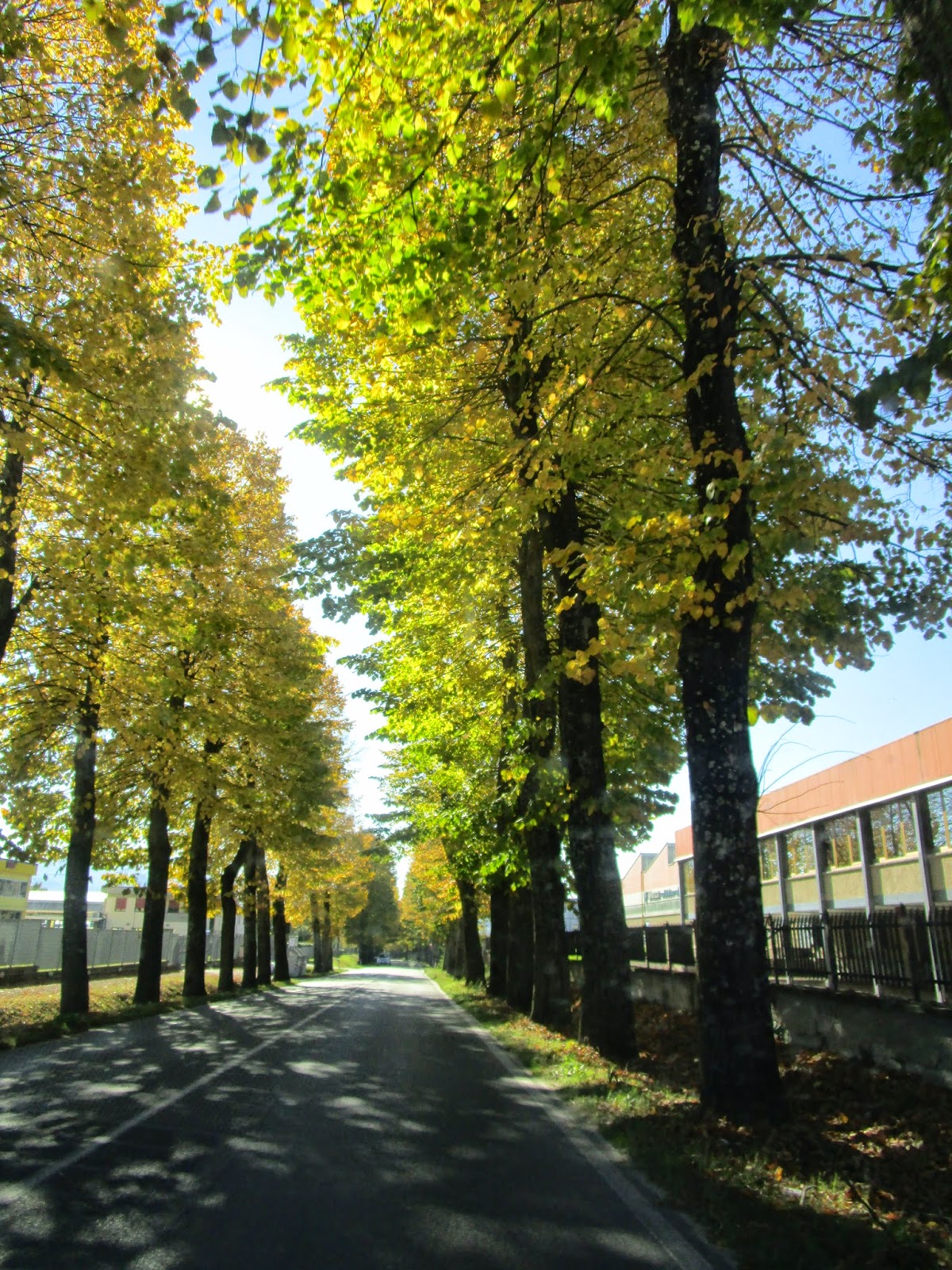Say the word “Italy” and the word associations that people
commonly think of are pizza, pasta and Tuscany. After our sojourn in Italy our
minds think of words like landscapes, architecture and friendly people (as well
as the pizza and pasta).
Italy has diverse landscapes and although we visited only a
fraction of the country, we saw a variety of scenery as we drove from the snowy
peaks from Austria down a long valley into central Italy and then through flat
agricultural land in the region of Bologna.
 |
| Entering Italy from the North takes one through the Italian Alps and then a gradual descent to flatter agricultural and industrial areas. |
 |
| Not for the first time in Europe, we encountered significant haze: we were unable to fully identify the cause - fog, smog, smoke and climatic conditions all seem to contribute |
As a result of ignoring the GPS instructions at Bologna, we finished
up driving into Tuscany and the hill country of Umbria via a devious mountain
route instead of by the main, direct highway. We had passed through some of
these areas in our travels of three years ago, so it felt a little like coming
‘home’.
 |
| Scenery we didn't plan on seeing, but thoroughly enjoyed anyway. Autumn leaves continue to delight us and as we have travelled across countries we have seen many different stages and colours of autumn |





After a few days in Umbria, we went to the region of rugged
coastline known as Cinque Terre located at the top of the ‘leg’ of Italy – a
precipitous hillside coastal strip that has been laboriously converted into
2,000 km of tight terraces (for olives and grapevines) using some 100 million
stones (estimated – not counted). The site has UNESCO World Heritage site
listing, and the effort needed for its construction can be compared to the
building of the pyramids or the Great Wall of China. We timed our arrival in this area to coincide
with warm sunny weather, which permitted us to walk along the Cinque Terra
path. This path connects five coastal villages which cling to the rocky coast.
It was a beautiful walk (or, we should say climb, for it involves going up and
down many hundreds of steps) with views of the coastline and terraced
hillsides, and pauses to look around the villages with their winding, narrow
streets.


  |
| Many steps up ... time out for a break .. and down |
 |
| Look! We have short sleeves instead of our usual thick jackets. It was lovely to experience one warm day again |
 |
| Do you recognize any of these people? |
 |
| The sun sets at the end of a beautiful day |
Tuscany 's landscape is more undulating than that of Umbria. The town of Cortona had big attraction to Anne, who has read books by Frances Mayes (Under the Tuscan Sun, plus many others). Italy attracts many expatriates who live out their dreams by buying an old house, restoring it and living ‘off the land’ or using it as a holiday home or rooms for tourists.
 |
| Cortona's town square (above) and houses (below) |

 |
| Undulating Tuscan landscape |
Just as diverse as the scenery is the architecture of the
different regions. To walk in the hill
towns of Umbria takes one back to medieval times. Each has its own old city
wall, complete with towers, gates, churches, convoluted, multi-level pathways
and streets, reachable to the tourist only by winding roads that go up and
up. One walks back into a time when fortification from enemies was the
over-riding consideration when building a city.


 |
Ancient stairs, towers, walls and streets: something to see at every turn

|




 |
| The heights of the towns provide expansive views from city walls |
In our time in Umbria we stayed with Giovanna, with whom we
had contact last year. It was a delight to meet her and learn from her.
Giovanna purchased a dwelling’in what was a ‘ghost village’. She has restored
the remains of a roof and derelict walls into a most comfortable home
consistent with heritage rules. Her village house is quite remote, reachable
only by a very bad road, so bad that we did not take our car on it, but left it
parked in the nearby town and either travelled to and fro with Giovanna or
walked in and out.
 |
| Giovanna's renovated home |

 |
| Sections of the 'ghost village' not restored and in a crumbling state |
 |
| The hill town of Parrano, just across the valley from Giovanna's house, seen rising through the early mist (above) and in the light of day (below) November's rainy weather may be seen in the background of many photos in this posting |
From Giovanna and her friends, to staff or other clients in
restaurants and hotels, we encountered only friendliness and helpfulness. We enjoyed watching the animated
conversations of the Italians, accompanied with much expression and many
gestures.
And yes, the pizza and pasta were excellent! (along with a delicious fish soup).
We chose to leave northern Italy for France a couple days early because of forecast heavy rain. Just as well! Later news reported torrential rains, flash flooding and loss of life in the areas we'd driven through.



















































































































